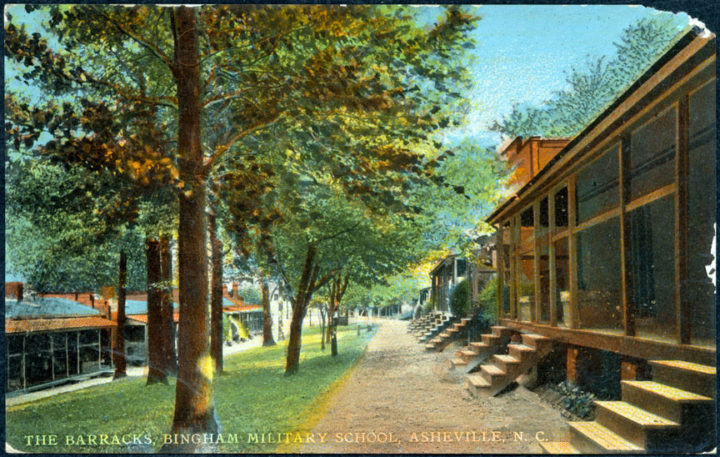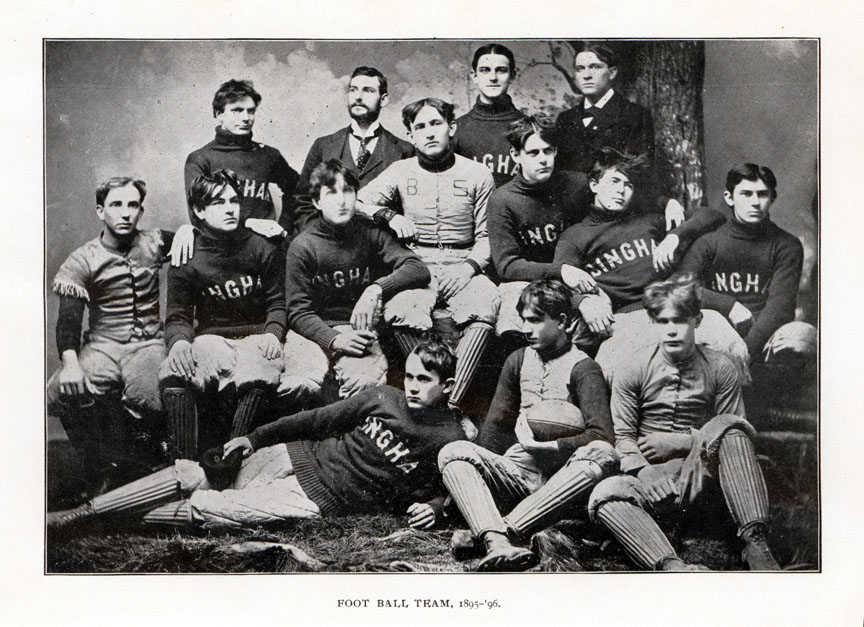In January 1891, news surfaced that Maj. Robert Bingham, superintendent of the prestigious Bingham Military School, was interested in relocating the private educational institution to Asheville. The decision came after a pair of fires at the school’s Mebane, N.C., location.
Word about Bingham’s plans quickly spread, piquing the interest of cities throughout the state. On Jan. 8, 1891, the Asheville Daily Citizen reported that “Greensboro, Durham, Charlotte and Raleigh have already taken steps looking to the securement of Bingham school.”
Despite competing locations, the paper asserted that Asheville remained the front-runner. “Major Bingham said that Asheville had advantages possessed by no other town in the state — first, by reason of its reputation as a health resort, and second, because it is the livest town in the state,” the Daily Citizen declared.
Before the superintendent would commit to Asheville, however, the city was asked to pass a $50,000 bond to assist in the new school’s construction. Perhaps fearful of community backlash, the Daily Citizen cushioned the stipulation with plenty of praise for Bingham. This included comments from Lt. J.B. Batchelor, who noted the school’s strong reputation among high-ranking officials and Capt. Henry Wygant, who expressed reverence for the school’s “high standard of honor.”
Bingham, too, was quoted in that day’s paper. The major noted that the institution was two years away from celebrating its centennial. Wherever the school relocated next, he declared, it would remain there “for another hundred years.”
The article concluded with an excerpt from a recent pamphlet issued by the National Bureau of Education. In it, the bureau described Bingham as “the oldest, the largest and the most successful male boarding school for secondary instruction in the south[.]”
On Jan. 16, 1891, an unsigned letter to the editor was published in the Daily Citizen. Echoing earlier remarks, the writer lavished praise for “the famous school,” asserting that its arrival would help increase the city’s population. “[F]amilies thus attracted would be all of that enterprising kind which we most need to co-operate in building up our various interests,” the letter writer claimed.

Despite these benefits, however, the author also expressed grave doubts regarding the proposed bond: “I am quite sure the sentiment of the people as a whole will be against it, and that the result will be a failure.”
Throughout the coming days, similar letters were published. Soon enough, even the Daily Citizen expressed concerns over the bond. On Jan. 17, the paper opined that if put to a vote, the measure would fail. The reason was simple: there was no direct benefit to the majority of the city’s residents. Such money would be more wisely spent “in bettering the public schools we have,” the paper declared.
The article concluded:
“To get the Bingham school here will be a capital thing. It is needed to attract and hold the patronage of the well-to-do, so many of whom come to Asheville, and would be glad of the advantages afforded by a school of the high standard of this one. Then let the well-to-do and those who would the more decidedly benefitted from the securing of the Bingham school pay for getting it.”
The following month, a local committee formed, determined to do just that. Concerned that the majority of residents would vote against the bond, the five-man group canvassed directly for funds, raising the required amount in a matter of 48 hours.
Eight months later, on Oct. 1, 1891, Bingham Military School opened. The school included eight barracks, a mess hall, kitchen and gymnasium. In the following day’s paper, the Asheville Daily Citizen reported:
“Major Bingham tells The Citizen that in spite of wind and weather, in spite of disappointments here and there, his buildings were completed and everything ready for the opening, which took place on time to the minute yesterday, with seventy-five young men in attendance.”
The school remained open for 36 years, before closing in 1928. According to records at the North Carolina Room at Pack Memorial Library, the Bingham Military School was located on the west end of the French Broad River, near the intersection of Pearson Bridge and Bingham roads.
Editor’s note: Peculiarities of spelling and punctuation are preserved from original documents.




Before you comment
The comments section is here to provide a platform for civil dialogue on the issues we face together as a local community. Xpress is committed to offering this platform for all voices, but when the tone of the discussion gets nasty or strays off topic, we believe many people choose not to participate. Xpress editors are determined to moderate comments to ensure a constructive interchange is maintained. All comments judged not to be in keeping with the spirit of civil discourse will be removed and repeat violators will be banned. See here for our terms of service. Thank you for being part of this effort to promote respectful discussion.